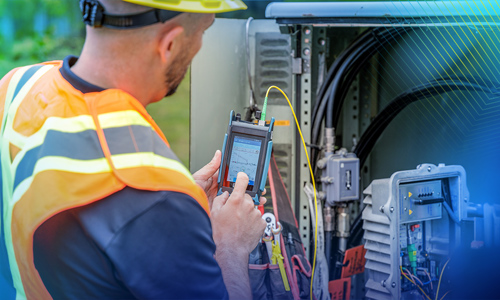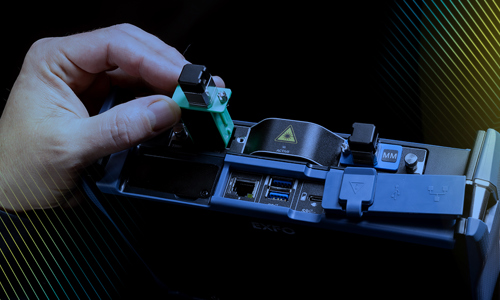5 key strategies in connecting rural communities for the long run
5 key strategies in connecting rural communities for the long run
Bringing broadband to the heartland
In rural landscapes, the digital divide presents a significant challenge. Fast and reliable broadband internet is not just a convenience but a necessity in a growing number of spheres such as socioeconomic development, education and healthcare. This blog explores five essential strategies to bring future-ready networks to rural communities, ensuring they are not left behind in the digital era.
1. Adapted network architectures and their adapted testing
Traditional urban network models often don't translate well to the rural context. Rural areas require solutions tailored to their unique geographic and demographic characteristics. Embracing passive optical network (PON) infrastructure approaches like distributed taps (even vs. uneven split architectures) can provide more efficient and cost-effective internet access to remote areas. These new architectures entail new approaches to testing, for instance unbalanced taps comes with a slew of challenges from the OTDR trace analysis to reporting.
2. Overcoming cost barriers with strategic planning
Deploying broadband in sparsely populated areas poses significant financial challenges. However, strategic planning, including phased rollouts and prioritizing areas with the most significant impact, can make these projects more viable. Additionally, exploring government grants and public-private partnerships can provide the necessary financial support.
3. Empowering local workforces with intuitive and automated tools
One of the often-overlooked aspects of rural broadband deployment is the local workforce's role. Empowering local workforces with technology and tools that optimize efficiency while ensuring reliable results is critical to bridge the gap in terms of experience in dealing with fiber optics. This grassroots approach taps into the pool of local resources while ensuring that new infrastructure is implemented reliably and rapidly—for overarching benefits that are felt immediately and locally.
4. Focusing on long-term sustainability
Rural networks need to be not just built but maintained. This requires focusing on long-term sustainability from the build – choosing reliable materials, ensuring easy maintainability, and planning for future upgrades. The networks should encompass future-ready systems to ensure that you are building for reliability and efficiency down the road. Networks must be designed to withstand local environmental conditions and have the flexibility to adapt as technology evolves.
5. Engaging communities in the process
Lastly, the success of rural broadband initiatives often hinges on community involvement. Engaging with local residents, understanding their needs, and involving them in the planning process can lead to more successful and widely accepted projects. Community engagement also helps in identifying local champions who can advocate for and support the project.
A connected future for all
The journey to connect rural communities is more than just a technical challenge – it's a commitment to ensuring equitable access to digital resources. By adopting these strategies, we can move closer to a future where geographic location no longer dictates access to the digital world. This endeavor is not just about laying down cables and connecting them reliably; it's about laying down opportunities and connecting people to them.
For a deeper dive into the best-suited technologies and best practices involved in rolling out and testing broadband in rural settings, we recommend watching the FBA 1-hour webinar jointly presented by Corning and EXFO titled Connecting rural communities with reliable future-ready networks.




